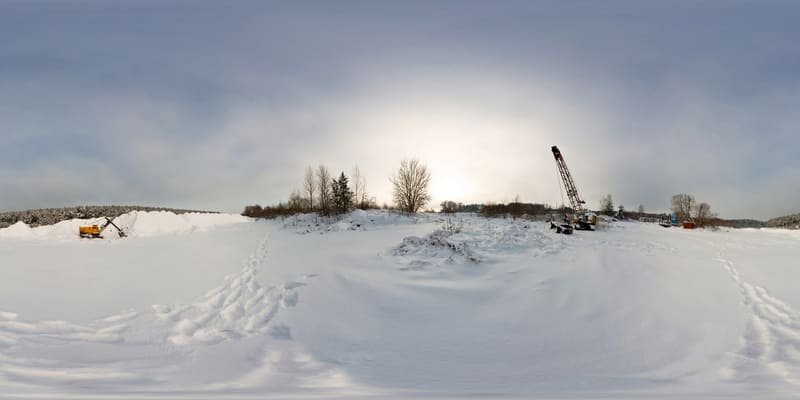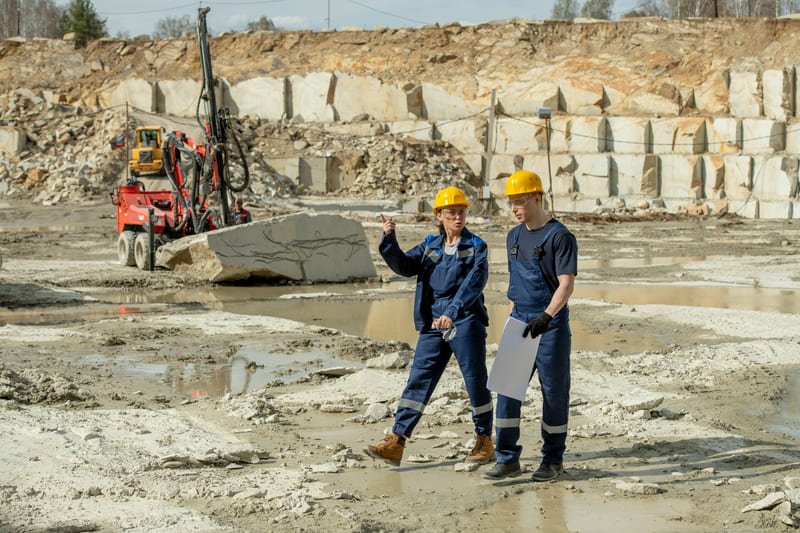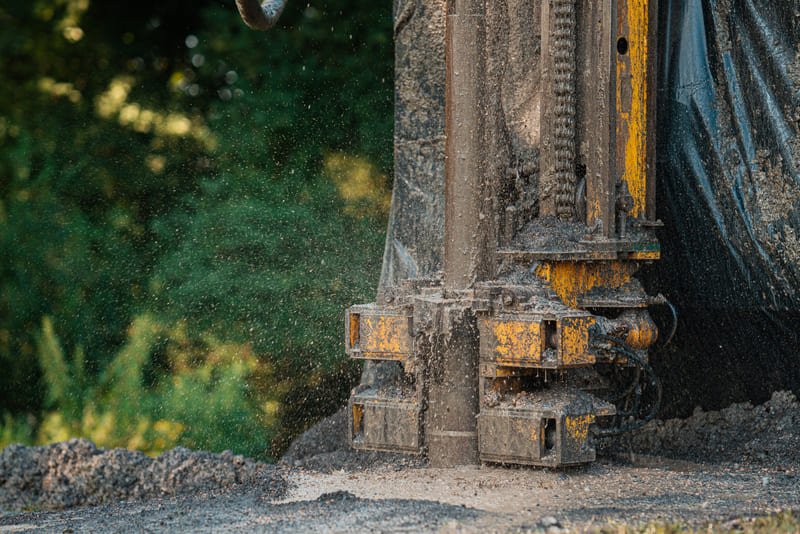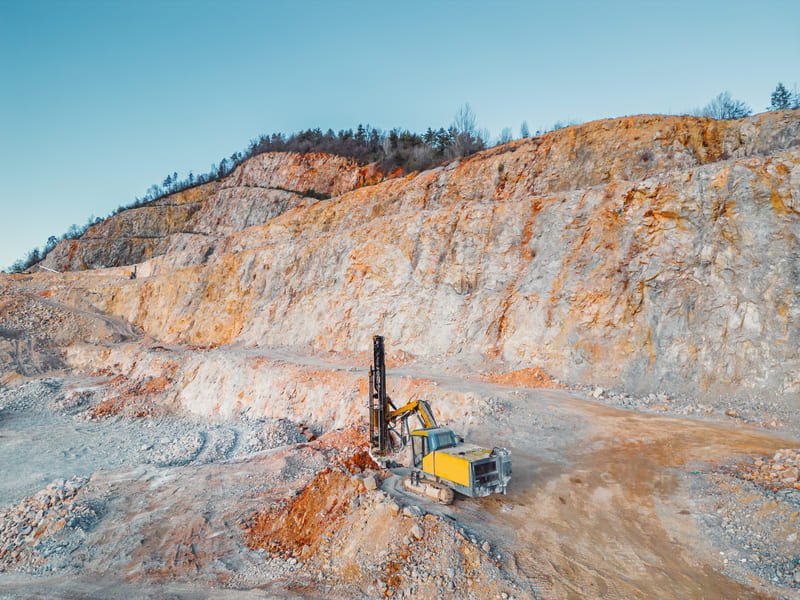Drilling into the depths of our planet is not just a technical feat; it’s a journey filled with obstacles that test our ingenuity.
The primary challenges in drilling into the Earth include handling extreme pressure and temperature conditions, ensuring equipment reliability, maintaining wellbore stability, and mitigating environmental impacts. These factors are critical in successful drilling operations.
But don’t let this brief overview fool you—there’s a lot more beneath the surface! Let’s dive deeper into each challenge and discover the innovations that are making a difference.
Drilling fluids are used to cool drill bits.True
Drilling fluids help cool and lubricate drill bits, essential for efficiency.
What Are the Technical Challenges of Drilling?
Drilling operations face various technical challenges that demand innovative solutions and precise execution.
Technical challenges in drilling include managing high-pressure zones, ensuring precise directional drilling, optimizing drilling fluids, and controlling vibrations. Addressing these issues is crucial for operational efficiency and safety.

Managing High-Pressure Zones
One of the foremost challenges in drilling is handling high-pressure zones within the Earth's crust. These zones can lead to blowouts if not carefully managed, requiring robust blowout preventers1 and pressure control systems. Engineers must continuously monitor pressure levels to mitigate risks, using real-time data analytics to make informed decisions.
Ensuring Precise Directional Drilling
Directional drilling allows access to resources located at varying depths and angles. However, achieving precision in this process is challenging due to geological unpredictability. Advanced techniques like rotary steerable systems and sophisticated software for geosteering2 are employed to enhance accuracy and control.
Optimizing Drilling Fluids
Drilling fluids, or muds, play a vital role in cooling and lubricating the drill bit, transporting cuttings to the surface, and maintaining wellbore stability. The challenge lies in formulating the right mixture that can adapt to varying subsurface conditions. Engineers often use synthetic-based fluids to improve performance, yet this can increase costs and environmental concerns.
| Fluid Type | Advantages | Disadvantages |
|---|---|---|
| Water-based | Cost-effective, environmentally friendly | Limited temperature stability |
| Oil-based | Excellent lubricity and thermal stability | Higher cost, environmental disposal issues |
| Synthetic-based | Superior performance, adaptable formulation | Expensive, potential toxicity |
Controlling Vibrations
Vibrations during drilling can lead to equipment damage and inefficient operations. To counteract this, drillers use techniques such as vibration dampening tools3 and real-time monitoring systems to optimize drill string stability. Proper vibration management improves bit lifespan and overall drilling efficiency.
High-pressure zones can cause blowouts if unmanaged.True
Blowouts occur due to uncontrolled pressure, needing preventive measures.
Water-based fluids are superior in thermal stability.False
Oil-based fluids offer better thermal stability than water-based ones.
How Do Extreme Temperatures and Pressures Affect Drilling?
Extreme temperatures and pressures significantly impact the drilling process, posing challenges to both equipment and operations.
Extreme temperatures and pressures can cause equipment failures, affect drilling fluid properties, and complicate wellbore stability, necessitating specialized technology and materials for successful operations.

Understanding the Effects of Temperature on Drilling
In the depths of the Earth, temperatures can soar to over 300°C (572°F), posing a substantial challenge for drilling operations. Such extreme heat can degrade drilling equipment, causing material fatigue4 and reducing the lifespan of crucial components like drill bits and seals. Additionally, high temperatures affect drilling fluids, altering their viscosity and leading to potential loss of circulation or inefficient cuttings removal.
Challenges with High-Pressure Environments
As depth increases, so does the pressure, reaching levels that can exceed 20,000 psi. This immense pressure can compromise wellbore stability, leading to issues like blowouts or collapses if not managed properly. Specialized high-pressure equipment is required to withstand these conditions, including blowout preventers (BOPs) and high-strength drill pipes. The use of advanced pressure management systems5 is crucial to maintain operational safety and efficiency.
Innovations to Combat Extreme Conditions
Innovations in material science have led to the development of heat-resistant alloys and ceramics used in drill bits and tools, which enhance durability in high-temperature settings. Moreover, real-time monitoring technologies enable operators to assess temperature and pressure changes instantly, allowing for quick adjustments in drilling strategies6. This technology plays a pivotal role in minimizing risks associated with extreme conditions.
Adaptations in Drilling Fluid Technology
Drilling fluids must be formulated to withstand high temperatures and pressures without losing functionality. Engineers have developed synthetic-based muds (SBMs) that maintain stable properties under extreme conditions, reducing the risk of equipment wear and wellbore instability. These fluids also enhance lubrication and cooling of the drill bit, which is vital for maintaining drilling performance7.
Addressing Wellbore Stability
Wellbore stability is paramount when drilling through high-pressure zones. Engineers utilize geomechanical modeling to predict how different formations will react under extreme conditions. By understanding rock behavior, they can design appropriate casing programs and choose suitable mud weights to prevent wellbore collapse or formation damage. This proactive approach helps mitigate risks and ensures successful penetration into challenging geological layers.
High temperatures degrade drill bits and seals.True
Extreme heat causes material fatigue, reducing component lifespan.
Standard drilling fluids remain stable under high pressure.False
Standard fluids lose functionality; specialized ones are needed.
What Environmental Concerns Arise from Drilling Activities?
Drilling activities, while essential for resource extraction, pose significant environmental risks.
Environmental concerns from drilling include habitat disruption, water contamination, air pollution, and greenhouse gas emissions. These impacts necessitate stringent regulations and sustainable practices.

Habitat Disruption and Biodiversity Loss
One of the most immediate environmental concerns associated with drilling is habitat disruption. The construction of access roads, drilling sites, and support facilities can lead to significant habitat loss and fragmentation. This disruption can adversely affect local flora and fauna, potentially leading to declines in biodiversity. For instance, drilling in sensitive ecosystems8 such as rainforests or arctic regions can have long-term ecological consequences.
Water Contamination
Drilling activities often pose a risk to water resources through potential contamination. Chemicals used in drilling fluids can seep into groundwater or nearby water bodies, impacting both aquatic life and human water supplies. Hydraulic fracturing9, in particular, has raised concerns over the potential for chemical leakage into underground water tables. Implementing stringent monitoring and management practices is crucial to mitigate these risks.
| Potential Contaminant | Source | Impact |
|---|---|---|
| Drilling Fluids | Surface spills, leaks | Water pollution |
| Produced Water | Disposal mishandling | Aquatic ecosystem damage |
Air Pollution and Greenhouse Gas Emissions
The release of pollutants into the atmosphere is another significant concern. Drilling operations can emit methane, a potent greenhouse gas, as well as other pollutants like volatile organic compounds (VOCs) and particulate matter. Methane emissions are especially problematic as they contribute substantially to climate change. Effective management practices and technological innovations can help reduce these emissions.
Noise Pollution
Drilling activities generate substantial noise, which can disturb wildlife and human communities. The constant hum of machinery and transport vehicles can disrupt animal communication and breeding patterns, affecting ecosystem balance. In areas close to human settlements, noise pollution can lead to health issues such as stress and sleep disturbances for residents.
Regulatory Frameworks and Sustainable Practices
Addressing these environmental concerns requires robust regulatory frameworks and the adoption of sustainable drilling practices. Many countries have established regulations to minimize environmental impacts from drilling activities. Innovations such as closed-loop drilling systems10 and real-time monitoring technologies are being developed to enhance environmental protection measures. Ensuring compliance with these regulations is vital for minimizing ecological footprints.
Drilling activities can lead to habitat disruption.True
Drilling requires access roads and facilities, fragmenting habitats and affecting biodiversity.
Closed-loop drilling systems increase environmental risks.False
Closed-loop systems reduce environmental impact by preventing waste leakage and spills.
How Can Innovations Improve Drilling Efficiency?
Innovative technologies are transforming drilling operations, making them faster, safer, and more cost-effective.
Innovations in drilling efficiency revolve around advanced technologies like automation, real-time data analytics, and improved materials, which collectively enhance precision and reduce operational costs. These advancements ensure that drilling operations can meet increasing demands while minimizing environmental impacts.

Leveraging Automation in Drilling Operations
Automation is playing a pivotal role in enhancing drilling efficiency by reducing human error and speeding up processes. Robotic systems are now capable of performing repetitive tasks with high precision, which significantly cuts down on the time and costs associated with traditional drilling methods.
For example, automated drill rigs can adjust operations in real-time based on the data they collect, ensuring optimal performance under varying conditions. This adaptability not only boosts productivity but also enhances safety by reducing the need for human intervention in hazardous environments.
Real-Time Data Analytics
The incorporation of real-time data analytics11 into drilling operations allows for more informed decision-making. By monitoring key parameters such as pressure, temperature, and equipment status in real-time, operators can quickly identify potential issues before they become critical problems.
This proactive approach minimizes downtime and extends the lifespan of equipment, leading to substantial cost savings over time. Additionally, data-driven insights enable better planning and resource allocation, further optimizing drilling processes.
Advanced Materials and Technologies
Recent advancements in materials science have led to the development of stronger, more durable drilling equipment. High-performance alloys and composites are now used to manufacture drill bits and pipes that can withstand the extreme conditions encountered deep within the Earth's crust.
Moreover, innovations like rotary steerable systems allow for precise directional drilling, which is crucial for reaching targeted deposits efficiently. These technologies enable operators to navigate complex geological formations with ease, ensuring maximum resource extraction with minimal environmental disruption.
The Role of Sustainability in Innovation
As the industry moves towards greener practices, sustainable innovations are becoming increasingly important. Technologies that reduce waste and energy consumption not only improve efficiency but also help minimize the environmental footprint of drilling operations.
For instance, water recycling systems and biodegradable drilling fluids are being integrated into projects to reduce resource usage and environmental impact. These sustainable solutions ensure that drilling can continue to meet global energy demands without compromising ecological integrity.
Automation reduces human error in drilling operations.True
Automation performs repetitive tasks precisely, minimizing errors and enhancing safety.
Real-time data analytics increases drilling costs significantly.False
Real-time analytics minimizes downtime, saving costs by preventing critical issues.
Conclusion
Understanding these challenges is vital for advancing sustainable drilling practices that minimize ecological impacts while meeting energy demands.
-
Understanding blowout prevention is crucial for safe drilling operations.: A blowout preventer (BOP) shuts off the valve leading underneath the machinery to stop any liquid from surfacing in a dangerous explosion, or a kick. ↩
-
Geosteering enhances precision in directional drilling projects.: Geo-steering is when you are getting real time LWD data and you are interpreting it then adjusting the well plan in according with what the LWD is telling you. ↩
-
Learn how vibration control can improve drilling efficiency.: This study deals with modelling and controlling of drill string vibrations with focus on stick slip vibrations in vertical wells. ↩
-
Learn how high heat degrades drilling materials.: A high-temperature drilling fluid is any system so formulated or treated to economically minimize the effects of temperature on the properties of the fluid. ↩
-
Discover systems that manage pressure for safe drilling.: Other tools used either individually or in concert with others for. MPD include: • Continuous circulating system. • Non-return valves. • Downhole deployment ... ↩
-
Explore tech that adjusts strategies in real-time.: Precise sensors and software enabling solutions to monitor key drilling parameters with focus on enhancing drilling performance, safety and efficiency. ↩
-
Understand how SBMs improve performance under stress.: (3) Drilling salts: ▻ Do not interfere with salt formations. (4) Lubricity: ▻ Minimize the friction between drill pipe and the wall of wellbore ... ↩
-
Discover how sensitive ecosystems are affected by drilling activities.: Drilling projects operate around the clock generating pollution, fueling climate change, disrupting wildlife and damaging public lands. ↩
-
Learn about the specific risks hydraulic fracturing poses to water quality.: It took nearly a decade, but former EPA scientist Dominic DiGiulio has proved that fracking has polluted groundwater in Wyoming. ↩
-
Explore how closed-loop systems improve environmental safety in drilling.: Closed loop drilling systems eliminate reserve pits and allow operators to reuse drilling fluids for multiple wells minimizing risks associated with open ... ↩
-
Understand how real-time data enhances decision-making and operational efficiency.: Real-time drilling data analysis is performed with 3D visualizations of geologic structures, engineers can gain insights while monitoring drilling progress and ... ↩








